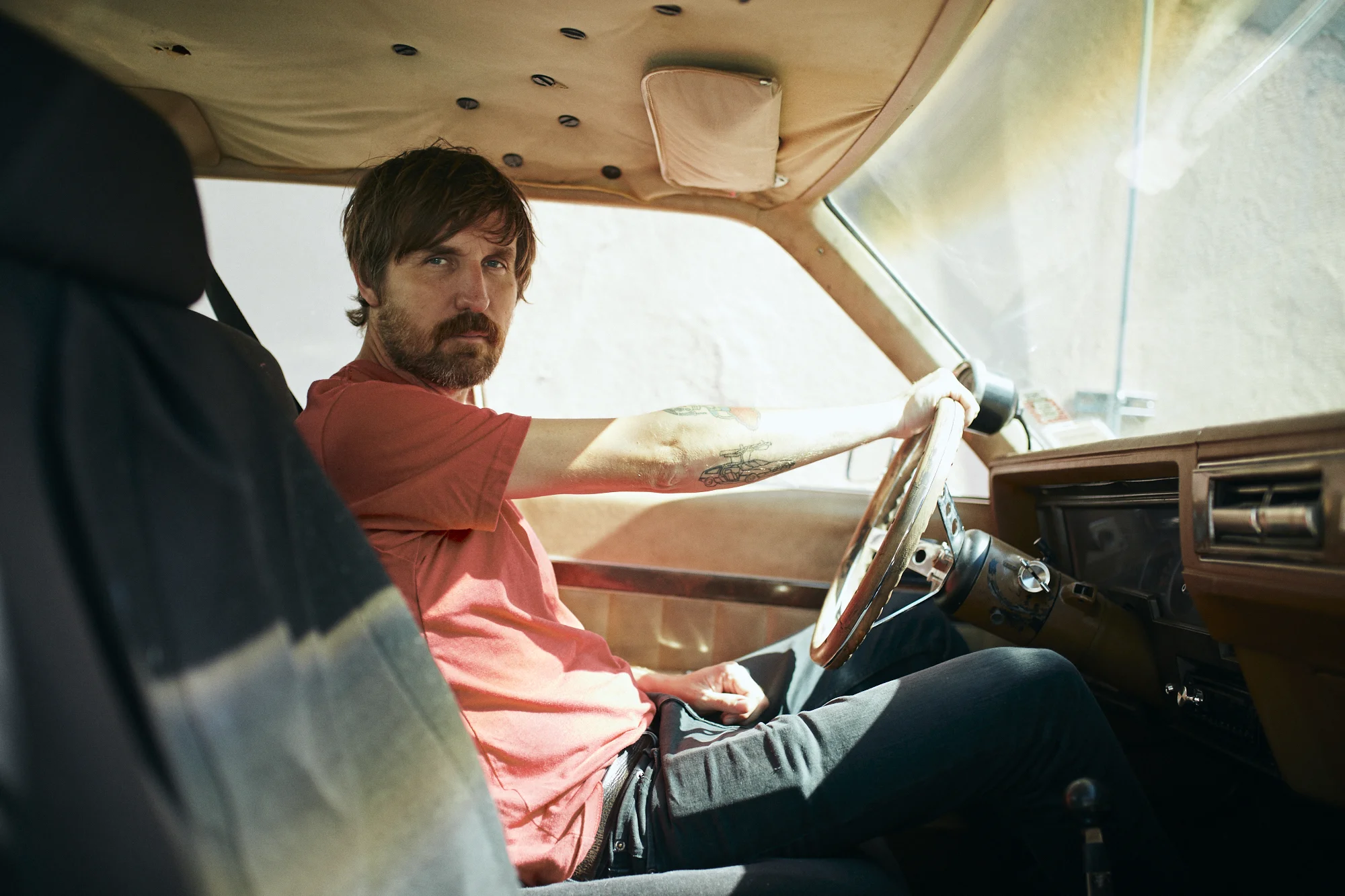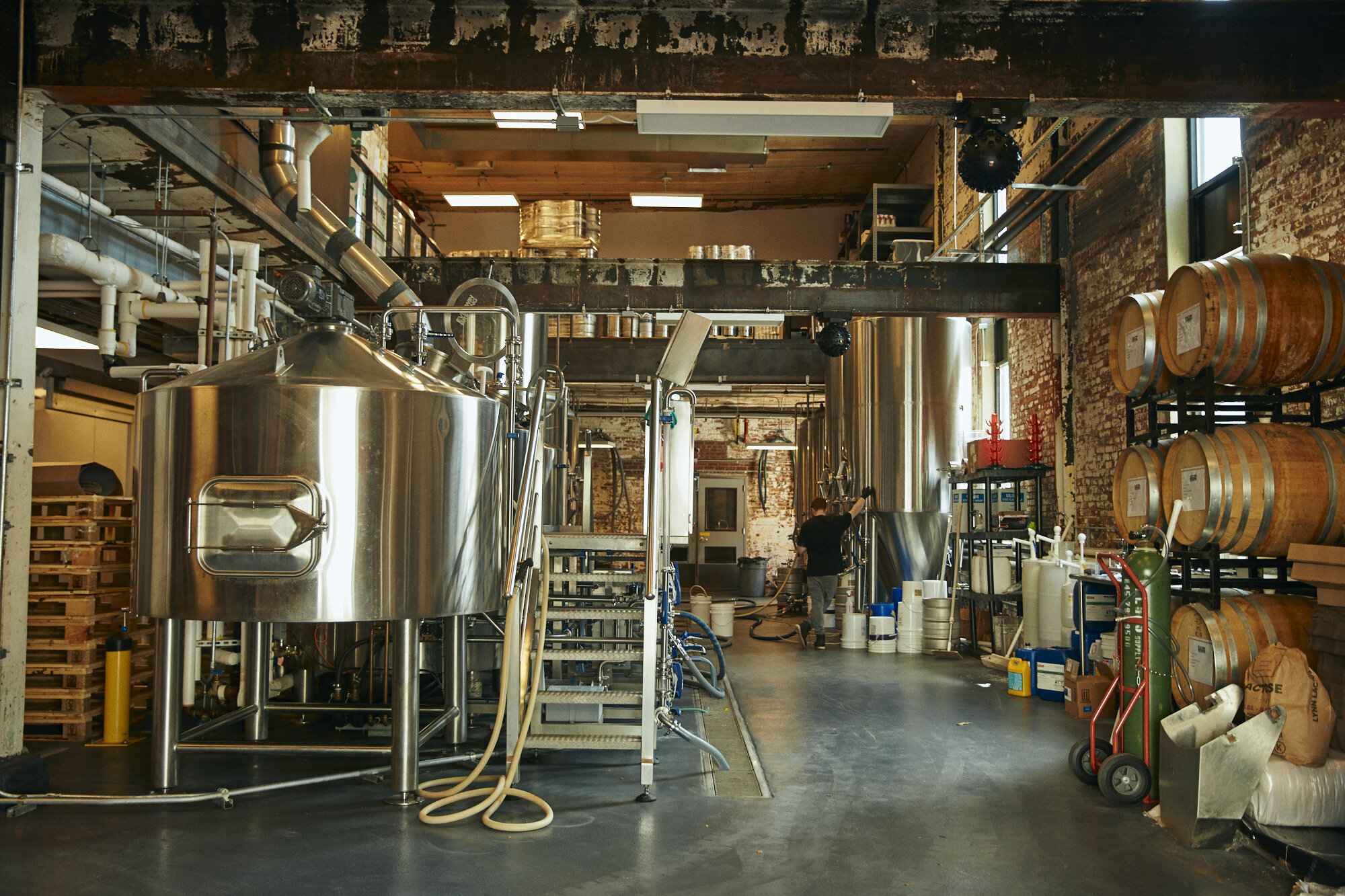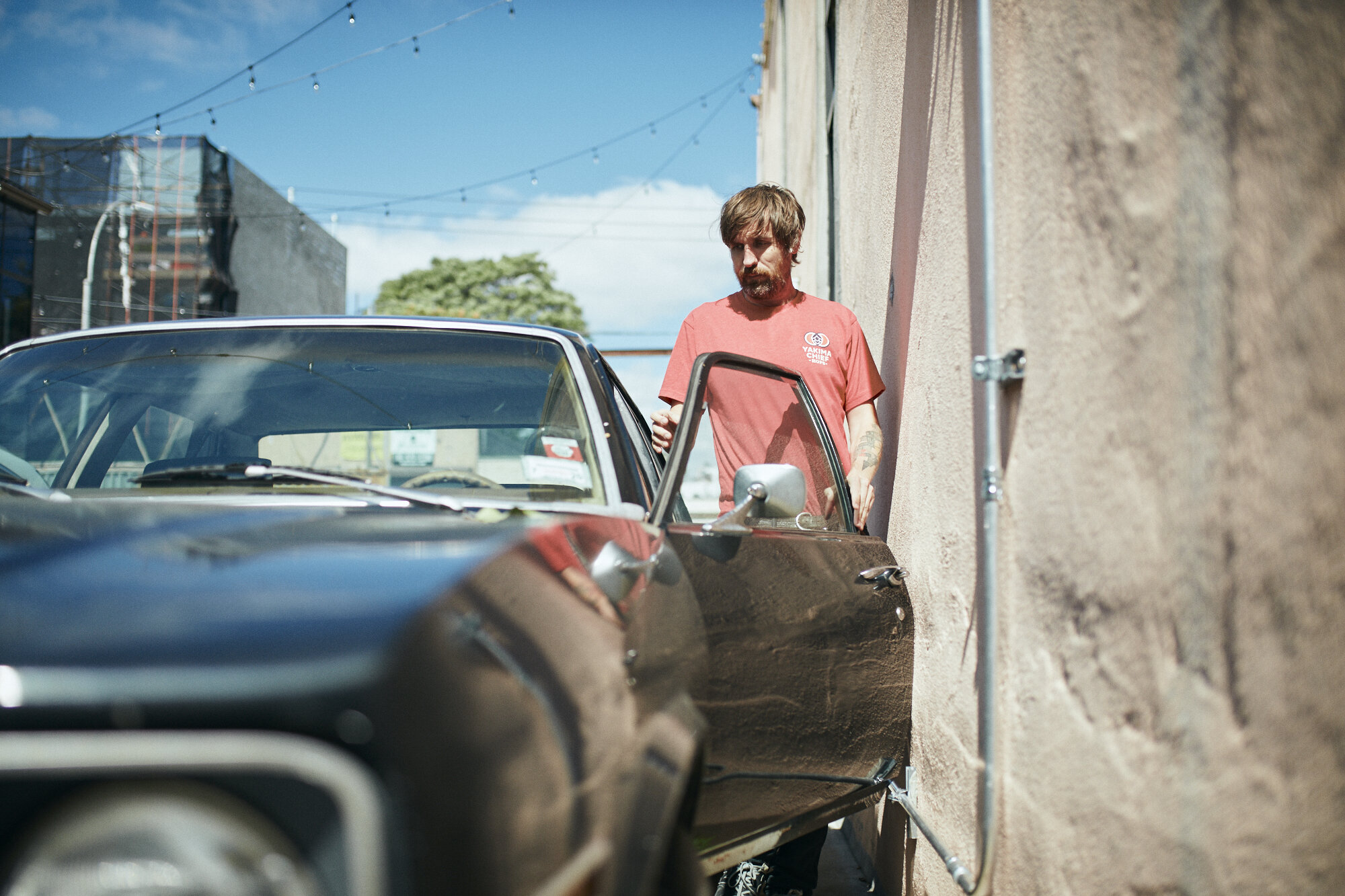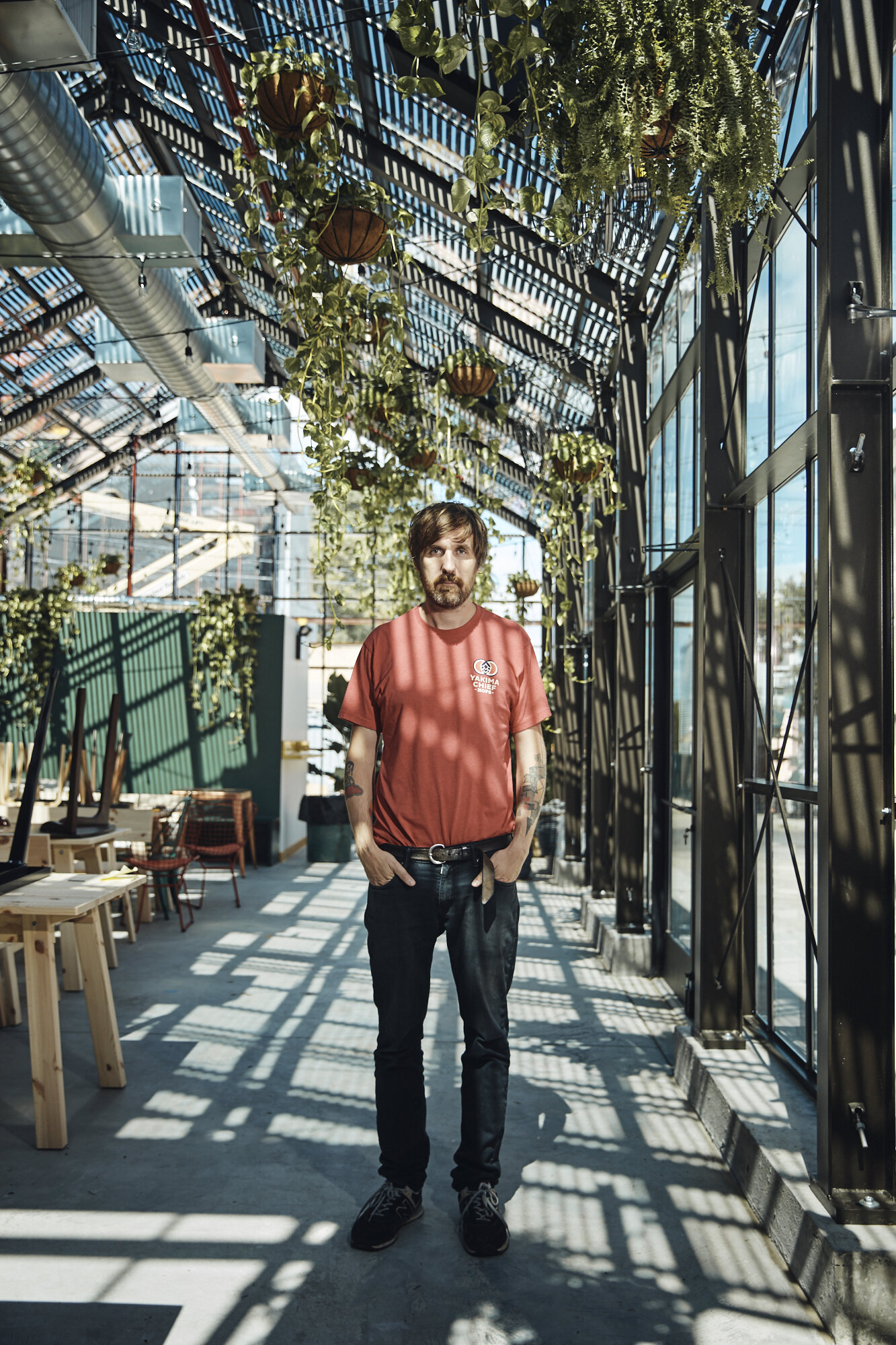Evil Twin Brewing's Jeppe Jarnit-Bjergsø on Planting Roots in New York City
“I was missing something,” Jeppe Jarnit-Bjergsø, the founder of Evil Twin Brewing says, leaning forward as if to confide in me. “I wanted to do things on my own terms, and this was the way I could be totally involved and control everything.”
He pauses briefly, smiling. “Here, I can really go all in.”
Photography by Matt Furman
Jeppe, who moved his family and business from Denmark to Brooklyn in 2012, is best known for producing beers nomadically (such as the highly acclaimed Even More Jesus imperial stout and Falco, an American-style IPA) renting space at other facilities around the world to do so. His twin brother, Mikkel Borg Bjergsø, has also built a beer empire of his own under the Mikkeller brand. Both brothers follow a similar business model, and together—though as has been well documented, very much separately—they have inspired many of today’s breweries to run their businesses without physical breweries of their own.
But, Jeppe says that itinerant brewing “doesn’t give me the freedom to do everything I want to do.” That’s why he’s spent the last several years converting a former banquet hall in the Ridgewood neighbourhood of Queens, New York City, into Evil Twin’s first physical location; it’s first real home. Here he can offer a true brand experience and sell beer straight to fans. And it’s about ready to be fully revealed.
The new brewery has been open for retail sales—driven by weekly drops of up to five can releases—and has operated a pop-up bar at nearby Nowadays since early this year. In the coming weeks it will also offer a place to drink its beers on the premises, in the form of an impressive greenhouse taproom.
The spacious, airy glass structure is cosy, softened by warm wooden panelling, simple strings of overhead lights, and plenty of hanging plants. Upon entering the space on a recent sunny afternoon, I quickly found myself picturing the future scenes of guests happily drinking and chatting, all bathed in the golden glow of a late afternoon.
The taproom can comfortably seat about 75 customers (an adjacent outdoor area can hold many more) Jeppe tells me after giving me a tour of the production area, which is helmed by an 18 hectolitre (15 US barrel) brewhouse. He cracks a can of a recent collaboration with fellow New York State brewers Hudson Valley Brewery. The beer is tongue-twistingly named: The Future is Here and Everything Must Contain Extra Milk Sugar and Three Varieties of Fruit. This sour triple IPA features additions of dragonfruit, watermelon, and lime. I find it pleasantly sweet and creamy, with a taste reminiscent of Jolly Ranchers.
Jeppe’s innovative thinking and fun, creative flair in the pursuit of interesting flavours also shines throughout his line of Evil Twin Brewing NYC beers, now approaching almost 100 in number. Most notable are a series of sweet imperial stouts made with different candy bars, and odd-yet-clever sour ales fashioned after flavours including cherry cola and spicy avocado margaritas. There are also regular collaborations with highly regarded restaurants and breweries, including local favourites Interboro and Equilibrium.
We open a second can of The Future is Here, and, for the next hour, Jeppe speaks candidly about what drew him to Ridgewood, the challenges involved in establishing a second brand, how his culinary influences shape his brewing and business philosophies. And why it’s okay to put fried chicken in a beer.
Niko Krommydas: You built a highly regarded global brand without a physical location, and played a major role in legitimising and popularising the nomadic way of making beer. What made you finally take the more traditional path and open your own brewery?
Jeppe Jarnit-Bjergsø: I wanted complete control over my beers, and the freedom to do whatever I want. While I believe I make great beers as a contract brewer, the beers I’m doing here are already even better because I’m involved every day. As a nomadic brewer, you can’t stay on-site for two weeks and taste the beers in different phases. Here, I can check on things and make changes if we need to.
When I moved the business and my family to New York in 2012, I knew I wanted to be recognised as a part of the brewing scene here. That’s why New York is in the name. Opening the brewery takes some of the stress away that comes with nomadic brewing because we can produce less here and still make it work because we can sell beer direct to customers.
NK: There’s a decidedly different look and feel to the Evil Twin NYC brand. It’s a bit gritty, it utilises city streetscapes and other imagery for artwork, and beer names are inspired by cultural phenomena and occurrences specific to New York. Was that always the plan?
JJB: It was always the plan to make NYC a separate brand. Evil Twin has always been me, but this is me times two. I want people to know these beers are being created right in the middle of New York City, on a small scale, with me here.
I also needed a new challenge, although it’s been more challenging than I thought. But I love the idea of building a new brand and proving myself all over again. Evil Twin is worldwide and you can find us in every Whole Foods. So why should you want to come to Ridgewood to visit us? I wanted to give people a reason to come to the brewery.
NK: We’re sitting in the greenhouse taproom right now, and it’s opening in early October. What do you want the experience here to be like for your customers?
JJB: There are so many good breweries today, and so many good ones in New York City, so the competition is high. We all make great stouts, we all make great sours, we all make great IPAs. So how do you differentiate yourself? Taprooms are kinda boring in general. They all look the same, they all have the same approach.
That’s why we did a greenhouse. It’s outdoors, there are beautiful plants everywhere, it makes people talk and it creates a happy experience. At some point, we’ll have a secret invite-only bar and a coffee shop. The beer people will always come, and the Danish tourists will always come, but at the end of the day, I want a place where everyone can come and want to spend money because it’s a cool place to hang.
[The greenhouse] is actually one of a kind. The manufacturer lost its New York license after they built ours, so this is the first and last one they built. It can’t be replicated.
““Beer is meant to taste good. It’s that simple. It’s not philosophy, it’s not art. It’s something that’s supposed to taste good, and you want to sell it and have people put it in their face.””
NK: What made you decide to settle in Ridgewood? What do you like about it, and why did you feel it would be a good fit for Evil Twin’s home?
JJB: The main reason at the time was [that] I got offered the building. It was in the spring of 2015 that I first talked to the landlord. He’s a Danish photographer who moved here in 1978, and he reached out to me. I originally said no because I wanted to build a bigger brewery outside of the city to make all the Evil Twin beer under one roof. And, honestly, I didn’t know what Ridgewood was at the time. I knew it came after Bushwick [on the Subway route] but I had never been. But the building was in an awesome location right off the L train, and the outdoor space played a huge factor. So eventually I said yes.
Now that we’ve been here for a while and got to know the community, I love the location and I love the opportunity we have to help bring something new. We did the same thing when we opened Tørst in Greenpoint. You didn’t really go to Greenpoint for beer before that. But I like to challenge myself and I like to think we helped make Greenpoint what it is. It’s the same thing here in Ridgewood, the fact that we can help a neighbourhood that’s not fully developed. I think the locals will appreciate that because they don’t have too many options here.
Ridgewood is old-school, real Queens.
NK: Now that you’ve experienced both sides, what have been some key differences between contracting at established breweries and brewing at your own facility?
JJB: The key difference is full control, and the ability to change things on the go. That means during fermentation, before or after a fruit addition [for example], pretty much at any point until 30 minutes before the beer is canned. It’s like a chef in the kitchen. If you need more salt at some point, you can add salt. If you need more fruit in a beer, you can add the fruit.
Similarities? I mean, this is very different for me and I’ve never pretended to know everything. I made recipes and travelled. I’ve never pretended to know how the systems at all the different breweries I’ve used to function. The people at the breweries know how they work best and I’ve always asked for advice and been open to suggestions, and that’s how NYC is run. I’m very open-minded with our staff. I hear from other brewers how some head brewers are stubborn and they do things one way. It’s the opposite here. Every beer we make is a collaboration. We taste the beer together, we exchange ideas. That’s why we have a series of staff beers. The base is the same but each employee picks their own adjuncts to add.
I’ll never say to just make a beer and that’s it. I make the final decision because it’s my brand, but I’m always open to different ways if that means a better final result. There have been plenty of times that Anthony [Sorice, Evil Twin’s brewery operation manager and co-owner of Root + Branch Brewing] has suggested something that I didn’t fully agree with but I said let’s do it. I’m a very different boss in that way. I have full belief in the people I hire or I wouldn't hire them.
NK: Do you ever see a point where you’ll stop contracting, stop running the global brand, and focus exclusively on NYC?
JJB: No, never. We’ve built something great with Evil Twin, and if we didn’t have Evil Twin while we were building NYC it would’ve been impossible to do. I still want to sell my beer in Europe, sell in China, sell in California, and that’s why I want to keep things separate with two brands.
NK: You’ve always incorporated a food element into the brand. You’ve made beers for and with some of the best restaurants in the world, and you’ve created recipes using everything from doughnuts to fried chicken and pizza. But what pushes a culinary-inspired beer into something that feels a little more than a marketing gimmick?
JJB: Fried Fried Chicken Chicken was not planned. I was driving to West Virginia and I went to [American restaurant chain] Cracker Barrel for the first time, so I texted Matt [Tarpey, owner and brewmaster of The Veil Brewing Company] and he recommended ordering the fried chicken. It was good chicken. When we went out to eat the next night, we also had fried chicken. So we kept talking about fried chicken. The next day, I said, “Dude, let’s throw fried chicken in a beer.” So we went to Chick-Fil-A and got a bunch of chicken and did it.
It was the same with Big Ass Money Stout. I was trying to use something to impart local flavour in each country I brewed in. I did yuzu in Japan, kelp in Iceland. So I asked Mike [Murphy, head brewer at Lervig Aktiebryggeri] what Norway is famous for. His answer was frozen pizza and money. You’re never gonna taste frozen pizza and paper money, but there was a story behind it. Gimmicks can be fun from time to time.
NK: You recently posted on your Facebook page, along with a picture of a beer you recently made called Glazed Carrot Crockpot: “The day we start treating our brewery like a kitchen and think like chefs, we win.” Can you elaborate more on that, including what the prize is in doing so?
JJB: The prize is a whole new world of flavours. As much as I love the beer world and the quality is greater than it’s ever been, everything now is one-dimensional. It’s all about fruitiness and cakiness—fruited sours and IPAs and pastry stouts. Those are great and they sell but we’re losing out by not pushing boundaries and exploring the savoury aspects in brewing.
I think we lose a lot by not challenging ourselves as brewers. People ask, what do you consider yourself? An artist? A chemist? No, I consider myself a cook. I make something that people put in their face. Beer is meant to taste good. It’s that simple. It’s not philosophy, it’s not art. It’s something that’s supposed to taste good, and you want to sell it and have people put it in their face.
It’s the same as food, and I hope we can go more in that direction. If we start using spices and veggies, there’s a million flavour combinations. Stouts, you always see vanilla and chocolate and almonds. Sours, you always see raspberry and all that. IPAs, they all taste similar. As soon as we go down the savoury path, there’s no end to ideas.
When we did the beer with [New York’s two Michelin starred Korean restaurant] Atoboy, they asked if it was possible to use green plums in a beer. Fuck yeah, we can. I’ve done beers with olives, stouts with beef jerky and Spanish ham. [With flavours like these] we can start the craft-beer movement all over.


























